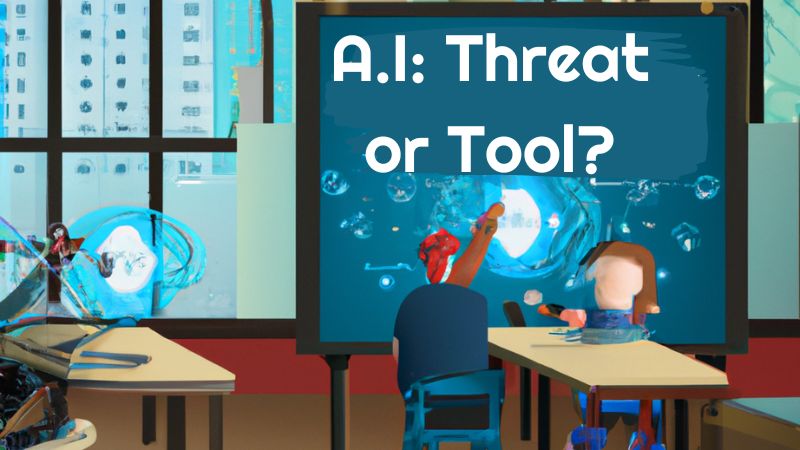I used AI to help write this, but “hear” me out. I have a valid point. Many have met the use of AI with excitement and concern, and the history of technology can provide insight into how people have reacted to innovations.
AI won’t replace educators, but those who know how to use AI and implement SEL will replace others.
Moral Panic
- Photography: When photography was first invented in the mid-19th century, many artists and painters saw it as a threat to their livelihood. They argued that photography could not be considered a proper art form because it was merely a mechanical process of capturing an image rather than the result of human skill and creativity. However, over time, photographers developed new techniques and styles that made use of the unique qualities of photography, and it became recognized as a legitimate art form in its own right.
- Photoshop: When digital photo editing software like Photoshop became widely available in the late 20th century, some photographers felt that it threatened the authenticity of their work. They worried that it would be too easy for anyone to manipulate images to create a false impression of reality. However, others saw the new tools as a way to enhance their creative vision and push the boundaries of what was possible with traditional photography.
- Music: In the late 19th century, the phonautograph was invented, the machine that could record sound waves onto paper or glass. Musicians were initially skeptical of this technology, as they believed that music should be experienced in person and that recordings could not capture the entire essence of a live performance. However, as recording technology improved, musicians began to see the potential for recordings to reach a wider audience and preserve performances for posterity.
- AI in creative fields: In recent years, the use of AI in innovative areas such as music, art, and literature has become more widespread. Some people see this as a way to enhance human creativity and bring new possibilities to these fields. Others worry that relying too heavily on AI could lead to a loss of human skill and creativity and that AI-generated works may need more emotional depth and complexity than human creations.
- Copyright and Art: Another related concept to consider is the idea of transformative work in copyright law. Transformative work is creating new work that significantly builds upon or transforms the original work. In some cases, using AI can help artists and creators do transformative work, leading to new and exciting art forms. However, it’s important to remember that the message of the art may change when using AI and that the person making the request is using AI as a tool, like any other tool, to create, transform, and give meaning to the generated art.
It’s A Tool
Moreover, using AI in education can have many benefits, especially for students with learning disabilities. AI can help these students express themselves more effectively and efficiently than they might otherwise. For example, a student who struggles with writing can use AI to generate a piece of paper that reflects their ideas more accurately. Additionally, some students may find that they can express themselves better using AI than traditional methods. For example, I used AI to help me express my ideas thoroughly and convey how I heard them in my mind instead of how they would have ended up on “paper.”
AI can be a powerful tool for teachers to enhance their lessons and help students learn more effectively. Teachers who can use AI to their full potential will be better equipped to prepare their students for future demands. AI won’t replace educators, but those who know how to use AI will replace others.
Overall, the history of technology suggests that innovations often spark both excitement and concern and that it can take time for people to fully understand and appreciate the potential of new tools and techniques. In the case of AI in education, it may be necessary to carefully consider how AI can aid human creativity and learning rather than as a replacement for human skills and abilities.
Comments
What are essential skills for teachers to learn to incorporate AI into the classroom and enhance student learning effectively?



[…] Panic in Video Games Moral Panic in A.I. Carlos Garza, M.Ed. in […]